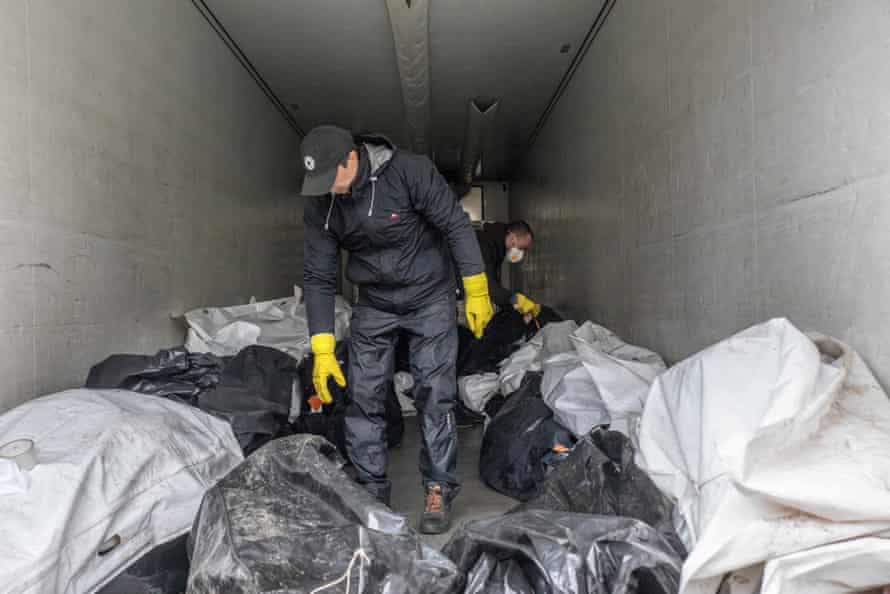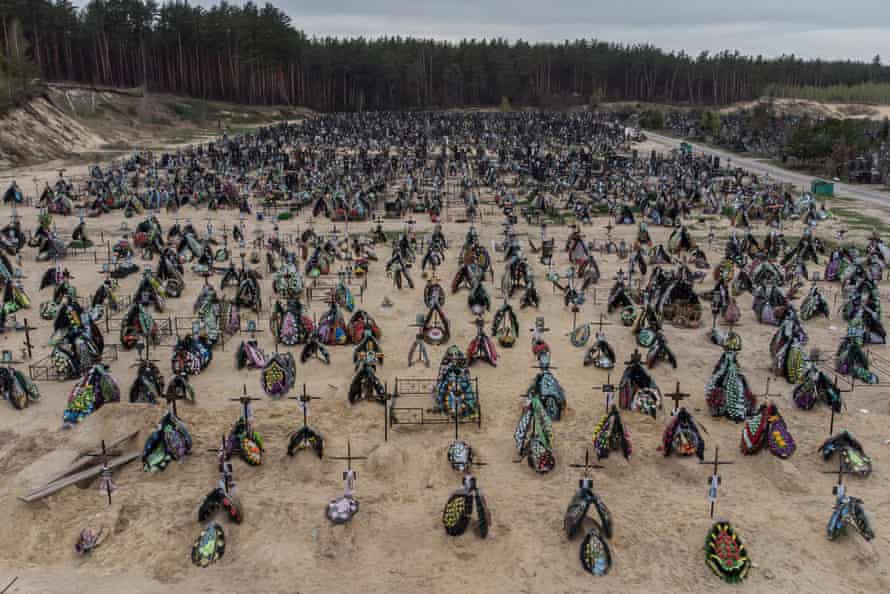THis first body arrived in late February, a few days after the Russian invasion of Ukraine seem. The next day, two more. At the beginning of March, the morgue on the outskirts of Kyiv no longer had enough space for the dead, who arrived every day with dozens of dead from the cities of Bucha and Borodinka – at the time it was occupied by Russian troops.
When Moscow’s withdrawal from areas north of the capital in early April exposed the brutality of mass graves, with hundreds of civilian bodies buried in residential neighbourhoods, each mortuary in Kyiv The area was already on the verge of collapse.
Today, more than two months into the war, corpses are crammed into refrigerated trucks in front of mortuaries, as authorities struggle to deal with the death toll.

“We were not prepared for this,” said a forensic doctor from a village a few kilometers from the capital. “No one would have imagined it would come this far.”
The survivors of Bucha, Borodinka, Irpin, and Hostomil, where the Russians are accused of war crimes against civilians, did not stop to celebrate their liberation, and immediately began counting and identifying their dead. Every day, dozens of people now approach refrigerated trucks to put the names of their loved ones on the bodies closed in black bags and stacked one on top of the other.
“As of Sunday, 1,123 bodies have been recovered in the Kyiv region alone, among them 35 are children,” said Oleh Tkalenko, the prosecutor of the Kyiv region. These are the bodies we have recovered from mass graves or found in the streets. We found people who were brutalized. All 1,123 cases are documented and examined by investigators. And every day we continue to uncover more bodies. I can’t provide any more accurate information because there are thousands of reports being written.”
Vladislav Perovsky, a Ukrainian forensic pathologist who, together with a team of forensic investigators, conducted dozens of autopsies on people from Bucha, Irpin and Borodinka who died during Russia’s month-long occupation of the region, explains that the process of identifying the bodies is complicated due to the state of decomposition of the bodies that were found. It is found in mass graves and the high level of brutality to which victims are subjected even after they are killed.
It tells about people who were killed and then crushed by tanks. “There are so many charred and mutilated bodies that it is impossible to identify,” he said. “A face can be smashed to pieces. You can’t put it back together. Sometimes, there is no head at all.”
His team, working in a mortuary whose identity cannot be determined for security reasons, is examining about 15 bodies a day, many of them mutilated.
An old couple approaching the rear doors of a car. With tears they pass the victim identification to the men standing inside the trailer among at least 30 bodies. It was their son who was serving in the civil resistance. The couple say he was betrayed by a woman when Russian soldiers occupied their town on the outskirts of the capital and were hunting down Ukrainian fighters and former soldiers who took part in the war in the Donbass.

Their son was one of them. The Russians arrested him, tortured him, broke his arms and legs, and put a plastic bag over his head. Then they shot him in the head and dumped his body on the side of the road. His body remained there for days until volunteers found it.
When the men inside the car show her the body of her son, the woman bursts into unbearable cries and cries, cursing the Russian soldiers, wishing them the same fate.
The tattoo on his shoulder is the only distinctive sign of an almost unrecognizable body, characterized by decomposition and brutality. When the woman sees her, she nods her head and accompanies her while crying.
Before his body can be buried, it must first be examined by Perovsky’s team, which, along with 18 experts from the French National Gendarmerie’s forensic department, began documenting the terror inflicted on civilians during the month-long occupation.
Subscribe to the 1st edition, our free daily newsletter – every weekday morning at 7am
“We’re seeing a lot of mutilated bodies,” Perovsky said. “A lot of them had their hands tied behind their backs and they had gunshots in the head from the back. There were also cases of automatic fire, like six to eight holes in the victims’ backs. We have several cases of cluster bombs embedded in the victims’ bodies.”
Russia has repeatedly denied targeting civilians and has said Ukrainian and Western allegations of war crimes have been fabricated. Evidence of death and destruction in the areas occupied by Russian forces seems to suggest otherwise.

“Lifelong food lover. Avid beeraholic. Zombie fanatic. Passionate travel practitioner.”
